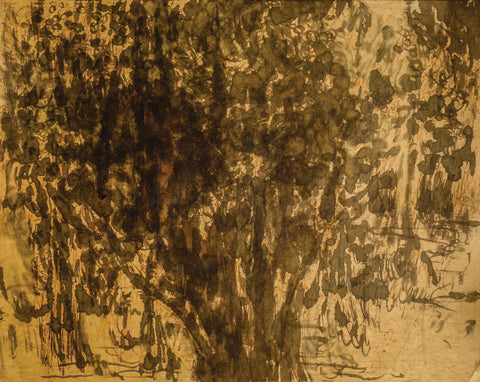Rabindranath Tagore
Born into a wealthy land-owning family of Bengal in 1861 , Rabindranath Tagore was initiated into art fairly late in his life, at the age of 63. He is thus better known for his literary achievements (for which he was awarded the Nobel Prize in 1914) though he has painted close to 2,500 paintings during the few years as an artist. Over 1500 of these are preserved at the Vishva Bharati University, Santiniketan.[Text Wrapping Break][Text Wrapping Break]Tagore was attracted to the sketches drawn by his elder brother Jyotirindranath. In 1924, while writing "Purabi" he started doodling on the pages of his manuscript. Though Tagore lacked a formal training in art, he used this lack of knowledge to his advantage, which opened new horizons in the use of line and color. In fact, through his work, it is evident that his art was a search for a newer form of expression; he was trying to express through his painting all that he couldn't in his verses. Tagore, in his article 'My Pictures', explained his paintings as the world of sound in a tiny bubble in the silence of the infinite. The Universe has only its language of gesture; it talks in the voice of pictures and dance.[Text Wrapping Break][Text Wrapping Break]In 1930, through a series of exhibition in Paris, London, Berlin, Moscow and New York, the world discovered the poet Rabindranath as an important modern painter. Subsequently, his works continued to be exhibited both in India and internationally. His reputation as an artist has continued to grow even after his death in 1941. Tagore's contribution to the art of India remains one of the most important to date.
His exhibit with us is titled Tree a pen and ink, water color and brown transparent ink artwork.




